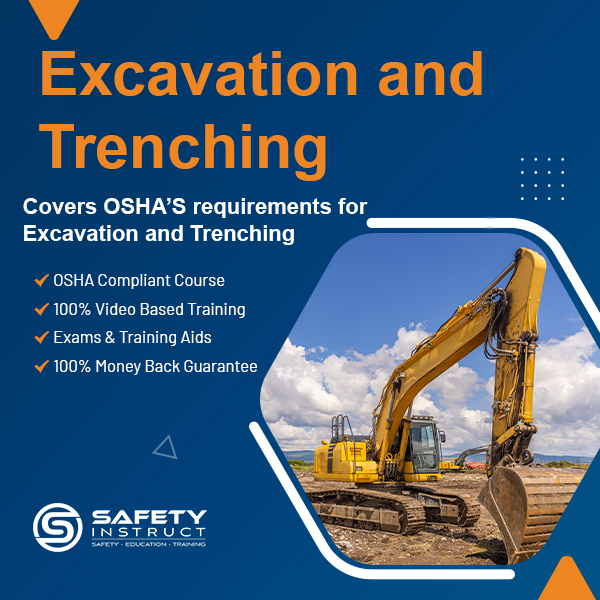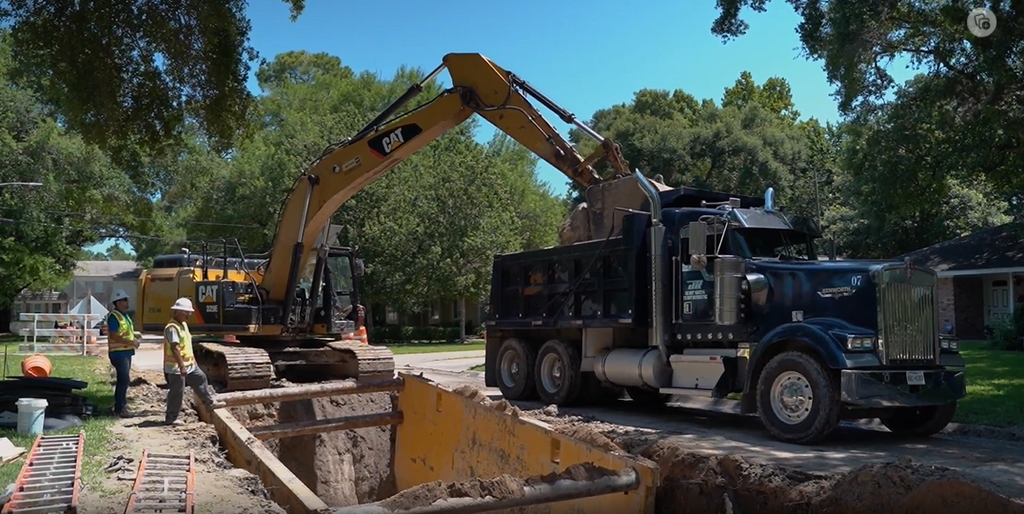No Products in the Cart
Click Here to Schedule a FREE Consultation
Phone: 866-943-6887 Email: sales@safetyinstruct.com



Excavation and trenching are some of the most hazardous construction operations workers can face on a jobsite. Depending on the task at hand, there are numerous risks that with excavation or trenching operations that can be dangerous, and sometimes even fatal. Understanding these risks and utilizing proper excavation and trenching practices is critical to working safely.
Understanding Excavation and Trenching
Trenching and excavation work pose serious hazards, with cave-ins being a significant risk that can lead to worker fatalities. A competent person, designated by the employer, plays a crucial role in assessing and mitigating risks, including classifying soil types as stable rock, Type A, Type B, or Type C under OSHA standards. It is imperative to have properly trained personnel on-site, and all employees involved in excavation or trenching must understand the associated risks and safety measures.
Site Preplanning
Approaching each trenching or excavation job with meticulous preplanning is crucial to prevent incidents and ensure safety. Factors like traffic, weather, nearby structures, shoring needs, and soil classification must be assessed beforehand. The excavation standards mandate determining utility locations, notifying relevant companies, and implementing necessary precautions to safeguard workers during excavation operations.
Protective Systems
Working in unprotected trenches or excavations poses severe dangers, with sudden collapses having the potential to be fatal. A protective system, designed and installed by a competent person, is essential to prevent cave-ins. OSHA standards mandate the use of protective systems, including sloping, benching, shoring, or shielding, for excavations five feet or deeper, and additional precautions, such as safe means of egress and structural ramp design, are required to ensure worker safety during excavation operations.
Additional Hazards and Protections
Excavation workers face various hazards, including cave-ins, falling loads, and hazardous atmospheres. OSHA mandates precautions such as maintaining a safe distance for materials, implementing warning systems, and conducting atmospheric testing for excavations deeper than four feet. Additional safety measures include addressing confined spaces within excavations, ensuring proper equipment usage, and preventing water accumulation to mitigate risks and comply with OSHA standards.


